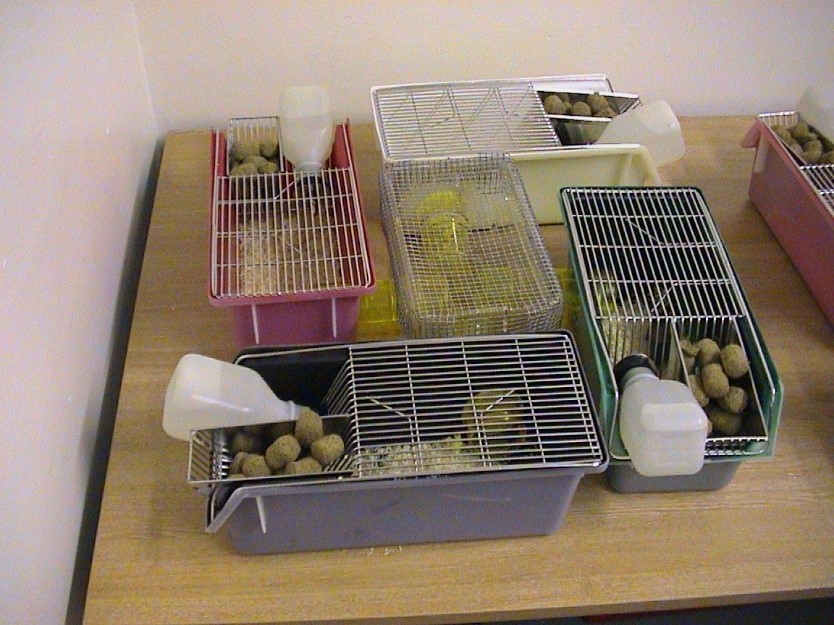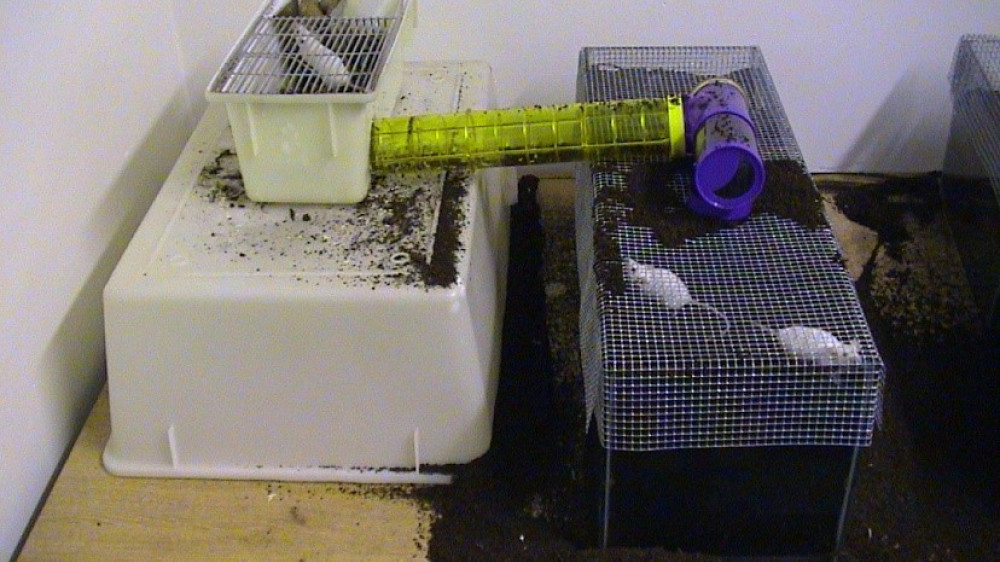Evaluating enrichment approach 2: Preference tests
Preference tests (also known as choice tests) offer animals a simple choice between two or more different environments. They are based on the assumption that animals will choose in their own best interests, spending more time in the environment that is associated with a higher level of welfare. Preference tests may provide a choice between:
- A standard cage and one containing an enrichment item.
- Two or more types of enrichment.
- Environments that provide different conditions (e.g. in temperature, light intensity or contact with other animals).
An example of preference test to determine which of two different light levels is preferred would be two cages linked by a tube, with food, water and litter in both but with lighting of 100 lux in one cage and 250 lux in the other. The time that the animals spend in each cage and/or the number of times they enter each cage can be measured and used to infer which light level is preferred. If the animals show a preference for one of the cages it indicates this light level is offering something beneficial to the animals that the other light level is not, and therefore indicating which is most likely to maximise the welfare of the animals.

Pros and cons
The advantages of this approach are:
- Observations can go ahead straight away without needing to collect data before the enrichment is introduced (unlike the ethogram approach; see above)
- There can be a clear indication of which environment/enrichment an animal prefers.
- By presenting more than two options, it is possible to measure levels of preference for several enrichment items together.
Care should be taken with this approach because:
- Cage manipulation is required to set up distinct areas or adjoining cages.
- The animals only have the choices they are presented with and may simply be choosing the option which minimises their discomfort the most (i.e. there is only a modest improvement in welfare), rather than indicating their ideal environment.
- The choice or preference an animal shows can be very subjective and restricted to that individual’s preference at that moment in time. Preferences may vary at different times of day, life stages, seasons and stages in the reproductive cycle.
- Simple preference tests do not indicate how important it is for an animal to have their preferred option. To assess this, motivation tests (see below) are needed.
Guidance on using motivation tests to evaluate environmental enrichment. (Image credit: C. Sherwin.)

